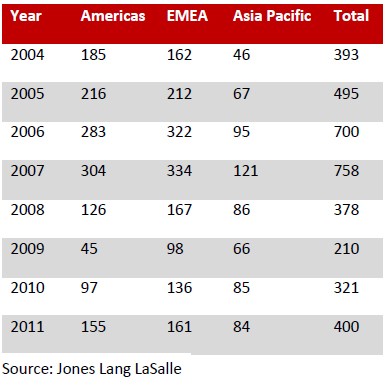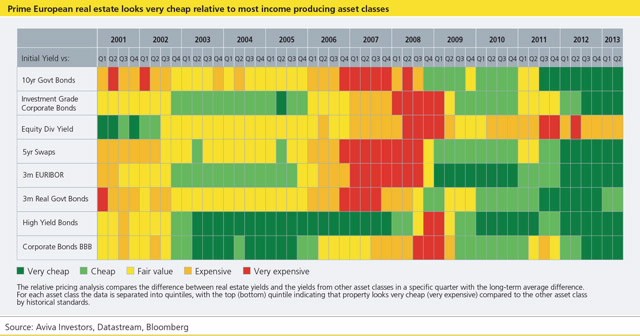Global Real Estate What Investors Should Consider
Post on: 21 Апрель, 2015 No Comment

Key Points
- Global real estate investments offer the potential for growth—increasingly important as the economic activity of several emerging markets increases more rapidly than that of many developed markets. Global real estate investments have historically delivered attractive returns and income relative to traditional investments. They also perform differently than stocks and bonds during various market cycles, offering diversification benefits. There are a number of ways to invest in real estate, including Real Estate Investment Trusts (REITs), Real Estate Operating Companies (REOCs), and mutual funds and ETFs that invest in them.
When investors think of real estate, they often think of their investment in the roof over their head or possibly a vacation property or a rental unit. But increasingly, investors are setting their sights a bit further afield with global real estate investments.
Why? Global real estate can be a valuable addition to an investment portfolio—complementing the traditional mix of stocks, bonds and other investment options. An asset with a low correlation to other investments in your portfolio can both reduce overall portfolio risk and increase returns. Global real estate offers the potential for growth and income, plus diversification for investors who have a tolerance for risk. Here, we’ll take a look at some of these features and discuss common ways to invest, such as through publicly traded Real Estate Investment Trusts (REITs) or Real Estate Operating Companies (REOCs), both of which are known as “real estate securities.” We’ll also discuss investing through mutual funds or exchange-traded funds (ETFs) that invest in real estate securities.
Capitalizing on global growth
In recent years, there’s been a shift in worldwide economic activity, as measured by gross domestic product, or GDP. While the United States boasts the world’s largest economy and stock market, the country’s share of the world’s GDP has been declining. Investing only in US stocks means excluding nearly three-fourths of the global economy 1 and over half of the world’s stock market value. 2 Indeed, developed markets, like the United States and Europe, are contributing a smaller share of global GDP, compared to their historical average. Developed market economies accounted for 80% of global GDP in 2000, but only 61% by the end of 2013. In contrast, emerging market economies have grown from 20% of global GDP in 2000 to 39% in 2013. 3
Forecasts call for GDP growth in emerging markets like Asia and Latin America to outpace gains in developed markets for years to come. If the balance of economic activity continues to migrate away from developed economies in the United States and Europe, real estate in developing markets can provide a way to tap into ascending economies. Real estate often serves as an effective barometer of economic health. Rising real estate prices and rents indicate strong demand and a healthy economy; conversely, falling real estate prices often portend trouble ahead.

There’s the potential to harness this global growth
Though past performance never serves as a guarantee of future results, as the graphic below shows, global real estate has performed favorably over time relative to a domestic benchmark (S&P 500® Index) and an international benchmark (MSCI EAFE Index). A $10,000 investment in the benchmark global real estate fund index (FTSE EPRA/NAREIT Global Index) in February 2005 would have grown to over $19,000 by June 2014—and that period includes the 2008-2009 financial crisis. Investing the same amount in US stocks—as measured by the S&P 500 Index—would have provided a slightly better return of $19,860. However, the same investment in international stocks, as measured by the MSCI EAFE Index, would have come up short at $17,570. 4 Keep in mind that the FTSE EPRA/NAREIT Global Index also experienced greater volatility during this period.
Global real estate outpaces global securities
Source: Morningstar Direct. Data as of 2/22/2005 to 6/30/2014. FTSE EPRA/NAREIT Global Index was incepted on 2/22/2005. Past performance is no guarantee of future results. The example is hypothetical and provided for illustrative purposes only. It is not intended to represent a specific investment product. Dividends and interest are assumed to have been reinvested. Indexes are unmanaged, do not incur management fees, costs, and expenses, and cannot be invested in directly.
Global real estate also has historically provided attractive yields relative to equities and many fixed income options. As of June 30, 2014, global REITs had an average yield of 3.53%, whereas the 10-year Treasury was yielding about 2.53%, and global bonds as represented by the Barclays Global Aggregate Bond Index ex U.S. was yielding only 1.45%. Note that when comparing the yield of global REITs to other fixed income and equity-dividend investments, be aware that global REITs tend to experience higher volatility and are more susceptible to rising interest rates.














